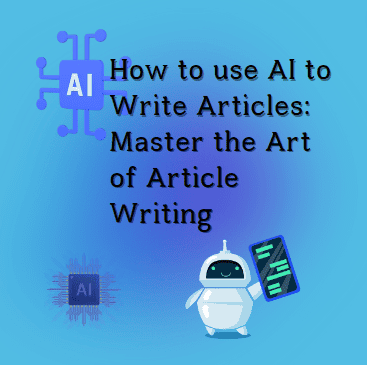Enhance AI Writers to Match Your Unique Brand Voice Needs
Tired of dull content?
To stand out, you need an authentic voice. AI offers shortcuts to scale quality content production if you imprint your brand’s flair. Through strategic training processes covering tone, diction and messaging, soon, your AI will intuitively emulate your voice’s distinctive spark across applications.
Key Takeaways:
- Analyze existing brand content to identify the distinct stylistic elements (tone, diction, messaging) forming your unique brand voice
- Transform analysis into concrete voice guidelines and diverse sample datasets to teach AI writing tools your preferred style.
- Use iterative testing loops prompting AI content creation, scoring outputs, and providing precise feedback to refine voice match.
- Conduct periodic assessments to catch deviations from brand voice goals early and address gaps with expanded datasets.
- Following structured voice emulation techniques unlocks AI’s immense potential for authentic, scalable content that deeply resonates with your audiences.
The result? More content resonating with your core audiences.
Key Data Analysis:
“According to analysis by PwC, 45% of total economic gains by 2030 will come from product enhancements enabled by AI, stimulating greater consumer demand. PwC research indicates that artificial intelligence will drive more significant product variety, with increased personalization, attractiveness and affordability for consumers over time.”
Ongoing evaluations and continued expansion of training content are imperative to match brand voice dynamics over time. This dedicated voice training enables AI writing platforms to produce high volumes of authentic, engaging content infused with your brand’s persona.
The table below summarizes the core benefits of training AI writing tools to match your brand voice:
Benefits of Brand Voice Training for AI Writing Tools
| Content Authenticity | By emitting a consistent voice aligned with brand identity, AI content resonates more with target users and drives engagement. |
| Enhanced Prompts | With an understanding of preferences like style, tone, and messaging, AI can respond with high-quality content. |
| Content Scalability | AI trained on brand voice can rapidly produce volumes of aligned content, saving time and resources |
| Brand Consistency | Audiences come to expect and trust the brand voice, making inconsistencies more glaring. AI training minimizes deviations. |
Understand What Makes Your Brand Voice Unique
Analyzing content verticals reveals consistent patterns pointing to your voice’s special flair. Unpack which verbal elements make your perspective pop, then transform insights into guidelines and datasets. Soon, AI will reliably emulate the voice resonating with your audiences.

First, let’s break down what makes your brand voice irresistibly unique!
Decoding Your Brand Voice’s Special Sauce
Before teaching AI your secret sauce, you must first break down what makes your brand voice unique. Which verbal and stylistic elements blend to form your je ne sais quoi?
Begin by pulling 5-10 content samples across formats showcasing your voice excellently. We’re hunting for common patterns tied to what makes your content pop. As you analyze samples, consider aspects like:
- Tone – What key emotions or feelings does your content evoke? Playful? Inspiring? Does tone shift for certain audiences?
- Style – Is your writing concise or verbose? Formal or casual? What types of language flourishes do you utilize?
- Messaging – What core ideas or values keep resurfacing? Do certain terms and imagery repeat?
Comparing content vertically across creators and formats reveals overlaps pointing to your distinctive essence. You may uncover punchy, empowering messaging coaching trend-focused advice for ambitious entrepreneurs.
These voice attribute patterns become creative guides for AI. Next, we’ll transform insights into optimized training datasets. But how precisely does your voice support your broader brand identity and audience relationships?
Consistency builds familiarity and trust over time. Audiences come to implicitly understand and anticipate your perspective on topics based on prior engagements. This fluency makes them more receptive to messaging and inclined to engage further. Could inconsistent, disjointed voices undermine hard-won audience relationships?
Set Clear Guidelines and Create Training Datasets
Got your brand voice ingredients decoded? Nice! Now we need datasets to get the output we need. Key outputs include distilled voice guidelines scoping tone, and formatting preferences. We also need a diverse training dataset spanning at least 5-10 content samples demonstrating your voice across topics and formats. This data forms the bedrock for AI education. Immersed in plentiful patterns, AI writing tools absorb and emulate your essence organically.
Let’s explore crafting optimized voice resources to unlock AI’s potential!
Crafting Your Brand Voice Guideposts
Armed with insights decoding your distinctive flair, it’s time to sculpt tailored training resources for AI education. This requires:
- Brand Voice Guidelines – Codify insights into a living document covering preferred tone (confident, sympathetic, etc), diction, verbal patterns, content formats and more. Treat this as your voice bible.
- Training Content Dataset – Gather at least 5-10 concrete content samples exhibiting your ideal voice across identified topological areas. For a footwear brand these may include product descriptions, Instagram captions, customer emails and video narration.
- Diversified Topics – Ensure training data spans key subjects for intended AI content output. A hospitality brand may cover sections on room offerings, local attractions, customer service values and sustainability efforts.
Why such emphasis on guidelines and curated datasets? Consistency. Training AI writing tools requires repeated exposure and feedback focused on your preferred style. Pattern-recognition drives AI capabilities.
Without explicit voice guardrails and benchmarks, AI will spew generic drivel. But immersed in your brand voice patterns, its writing will organically adopt your tone and style.
Let’s examine crafting optimized datasets and voice benchmarks in greater detail. Then we’ll progress to the interactive training and testing loops required to ingrain voice guidelines within AI assistants.
Train AI with Iterative Feedback Loops
We’ve built solid voice training foundations—now to put resources into action! Teaching AI writing tools works much like mentoring creative teams; through interactive practice, assessments and constructive feedback targeting growth areas. With sufficient, tailored feedback loops fueled by ever-expanding datasets, AI will increasingly emulate your voice in diverse applications.

Let’s dive into hands-on AI educational processes!
Teaching Through Interactive Testing
We’ve assembled our core training resources—excellent! Now we need to activate interactive education processes enabling AI assimilation of your brand voice:
Familiarization Stage:
- Introduce AI to Voice Guidelines – Ensure it fully comprehends the provided tone, messaging and style guardrails.
- Immerse AI in the Initial Dataset – Allow time for pattern recognition of distinct verbal and structural elements.
Testing Stage:
- Content Creation Prompts – Request AI generate sample content for brand topics based on guidelines. Assess initial alignment.
- Voice Consistency Scoring – compare outputs against human-created benchmarks to gauge successes and gaps.
Refinement Stage:
- Provide Precise Feedback – Note where phrasing, diction and formatting deviate from your preferences and ideals in guidelines.
- Enrich Datasets – Add more strong examples embodying target voice patterns for reinforcement.
Much like human creative teams, AI requires coaching through successive approximations to deeply instill stylistic needs. With constructive inputs tailored to fill gaps, eventually AI content will hit the high bar set by voice benchmarks.
Key Data Analysis:
“Artificial intelligence (AI) presents both significant opportunities and threats for businesses. PwC research shows that global GDP could be up to 14% higher in 2030 as a result of AI adoption – the equivalent of an additional $15.7 trillion. This potential impact makes AI the biggest commercial opportunity in today’s rapidly evolving economy. “
Evaluate and Retrain Periodically
Excellent work – your AI assistant is now consistently emulating that signature brand voice in its writing. However, maintaining this alignment long-term requires structured processes.
We need to implement periodic assessments comparing AI content with human benchmarks, pinpointing any performance gaps. Addressing identified inconsistencies through expanded datasets and retraining will lead to your preferred voice.
In this next section, we will outline voice consistency workflows for enduring success.
Consistency Through Ongoing Assessments
Congratulations, your AI assistant now consistently emulates core aspects of your brand voice! But we’re not done yet. Consistency requires iterative touchpoints assessing performance and additional training to emergent gaps.
Key steps include:
| Step | Description |
| Create Evaluation Criteria | Develop a detailed voice rating rubric covering conformity to tone, style, messaging and format guidelines. |
| Conduct Periodic Content Reviews | Every 60-90 days, benchmark a sample of AI content against criteria informed by human-created voice exemplars. |
| Identify Performance Gaps | Note areas where AI voice diverges from guidelines like phrasing, emotional resonance or other parameters. |
| Expand Training Datasets | Address recurrent gaps by curating additional dataset examples to cover lacking contexts. |
| Retrain and Retest AI | Retrain AI on updated datasets and benchmark against test suites to quantify improvements. |
While extensive upfront training optimizes initial release performance, language patterns evolve. So periodic tune-ups fuel continual alignment.
Over time these checkpoints require less effort as core voice parameters solidify. But they remain essential to maintain uncompromised performance and your audience relationship gains.
Best Practices for Ongoing Success
With strong initial brand voice training and assessments conducted, let’s shift our focus to sustaining alignment over the long run. This requires dedicated prompts enabling continuous brand voice education as contexts evolve across topics and formats.
From updating detailed voice guidelines to experimenting with advanced few-shot learning techniques, there are many proactive practices to maintain precision. By institutionalizing processes to keep our AI assistant’s finger on optimal creative output, we safeguard the voice consistency gains fueling impactful audience engagement.
Sustaining Aligned Voice Performance
With robust initial training and assessments established, let’s discuss workflows and techniques to lock-in consistent brand voice alignment:
- Update Voice Guidelines Regularly – Maintain this document as the North Star for AI creative direction across your organization. Continuously hone descriptions of optimal tone, style, topics and formats.
- Expand Training Content – Support guidepost documents with an ever-growing dataset repository reflecting brand voice across emerging contexts. This fuels continual AI education.
- Automate Evaluations – Construct dashboards with workflows to easily benchmark and analyze voice consistency at scale using comparative metrics. Surface insights to inform retraining.
- Employ MLOps Practices – Integrate model monitoring, automated testing and preemptive maintenance processes to minimize deviations rapidly.
- Experiment with Advanced Training Methods – Techniques like few-shot learning can help an AI grasp niche stylistic needs from just a few examples, bolstering precision.
The end goal is establishing an agile content quality assurance ecosystem that sustains the brand voice integrity unlocked through dedicated AI training. This blend of guidelines, assessments and ongoing education is essential as language itself evolves across mediums and audiences.
Key Takeaways on Matching Brand Voice with AI
In this section, we summarized the core processes covered to successfully train AI systems on unique brand voice parameters. Strategic decoding of voice elements, creation of guidelines and sample datasets, testing/feedback, and reviews are all critical.
When executed methodically, these structured voice techniques enable AI authoring platforms to produce high volumes of content infused with authentic brand personas. This in turn powers significant engagement and competitive advantages.

Critical Lessons for Voice Success
Let’s recap core insights equiping you to train AI writing assistants in your distinct brand voice:
- Decode Brand-Voice Quality– Carefully analyze content to derive tone, messaging and structural patterns forming your desired brand tone. Clarify alignments to brand identity and audience relationships.
- Set Strong Guardrails – Transform findings into comprehensive voice guidelines and diverse sample datasets that become AI education cornerstones.
- Employ Interactive Feedback – Leverage testing prompts, scoring rubrics and rich qualitative feedback to improve voice.
- Progressively Asses your Voice – Conduct periodic content reviews, gap analyses and follow-up training to maintain voice consistency as language and contexts evolve.
Audiences favor brands speaking consistently in an authentic and familiar voice.
AI multiplication of such perfectly-matched content unlocks significant competitive advantages.
Are you ready to amplify your voice?
Conclusion
We’ve covered a lot of ground detailing techniques to encode your irresistible brand voice within AI writing assistants. While the journey requires upfront strategic analyses and training rigors, the payoff in scaled content resonance makes it well worthwhile.
Looking ahead, advances in generative AI will continue expanding accessibility and precision of voice matching for brands of all sizes. But for now, following structured voice emulation practices unlocks immense potential for your AI content ambitions.
Always remember—the brand voice IS the content. Matching AI to your essence paves the way for solutions saving you exponential resources while allowing audiences to connect with you as never before.







